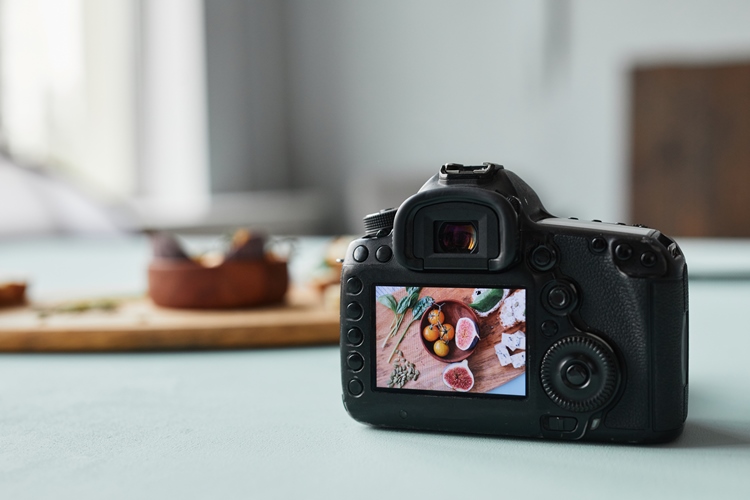Enhance your photography with composition and lighting.
In the previous week’s edition of basic photography, we examined the fundamental components of a camera through aperture, shutter and camera sensor. This week’s entry will delve further into those fundamental camera techniques for beginners, focusing primarily on composition and lighting.
Understanding the rule of thirds
The principle of the rule of thirds is founded on the concept that images tend to be more captivating and harmonious when they aren’t positioned in the centre. Imagine an overlay of a grid on your pictures, consisting of two vertical and two horizontal lines that divide the image into nine uniform segments.
When following the rule of thirds, instead of centring your subject or crucial elements within a scene, you would position them along one of the four lines or at the intersections where these lines meet.
Certain cameras even provide a grid feature that can be activated, which is particularly helpful if you’re in the process of mastering your image composition skills.
Photography revolves around imagination and individual interpretation, allowing you the freedom to occasionally disregard this guideline and position focal points in different areas of your photo.
While this deviation is completely acceptable, it’s crucial to first grasp the rule and cultivate the habit of deliberately contemplating the placement of points of interest. We also offer a compilation of compositional methods to enhance your photographic skills.

TAKE THE ENVIRONMENT INTO ACCOUNT
In broad terms, the environment should remain uncomplicated and devoid of excessive clutter to prevent diverting the viewer’s focus from the primary subject of the photograph.
Subdued hues and unembellished designs typically yield favourable results, as the objective is to avoid the possibility of viewers becoming more captivated by a vibrant building or a tower in the background than the focal point of your image.
Fixing a distracting background can be as simple as moving your subject or changing your angle, but if that doesn’t work, it may be possible to obscure it by using a wider aperture and getting in as close to your subject as possible.
Whenever you can, though, try to keep the background neutral, especially if you’re placing your subject off to the side of the photograph and the background is very visible.
BALANCE
The sense of symmetry within a photograph influences our emotional response upon viewing it.
An imbalanced photo has the potential to evoke a sense of discomfort, while a balanced one has the capacity to make a feeling of ease. Whether you opt for symmetry or imbalance in your photo, the choice itself isn’t crucial. However, understanding the rationale behind your choice is advisable.
Both approaches impact your photos divergently. Once more, this is one of those instances where a deeper understanding can facilitate the achievement of the intended impact.
LIGHTING
In the realm of photography, the kind of lighting stands as the principal factor influencing the composition of every image.
In photography, the concept of light pertains to the characteristics of the light source – be it natural or artificial – and the manner in which the light source’s placement interacts with your subject.
The arrangement and characteristics of light possess the potential to impact various aspects within your ultimate image, ranging from sharpness and tonality to the emotional resonance and beyond.
By observing how light interacts with the contours and lines of your subject, discerning which portions are illuminated and which remain in shadow, you’ll elevate your photography skills.
This process enables you to grasp the art of leveraging your light source optimally, a skill that proves invaluable across diverse compositions and projects.
Natural light is anything that occurs without human intervention, so it can be the direct light of the sun on a bright day, the diffused light created by a cloudy or foggy day or even the light of the moon at night.
Artificial light can often be moved around and adjusted to fit your situation. It is easier to position artificial light in relation to your subject than with natural lighting, where you would have to move the subject and camera according to the lighting technique that you want to use.
The quality of lighting can either enhance or diminish a photograph, and the early morning and evening periods are commonly regarded as the optimal moments for capturing images.
Within photography, the period shortly after sunrise or just before sunset is referred to as the “golden hour,” characterised by the sun being positioned lower in the sky, resulting in gentle and warmer illumination.

HOW TO CHOOSE YOUR FIRST CAMERA
Selecting your initial camera can be a daunting task. With numerous brands like Nikon and Canon, each offering an array of models, the options can feel overwhelming.
For novice photographers, key factors usually revolve around budget and functionality.
It’s advisable to delve into researching camera models within your designated budget range. Compare products to identify the features that resonate with you. Ideally, your first camera should provide room for your growth as a photographer.
Thus, ensure that it includes manual modes and offers compatibility with a wide range of lenses and accessories for future use. If you have fellow photography enthusiasts in your circle, seek their input on what they appreciate or dislike about their own cameras. – Khayr Zakariyya



















































